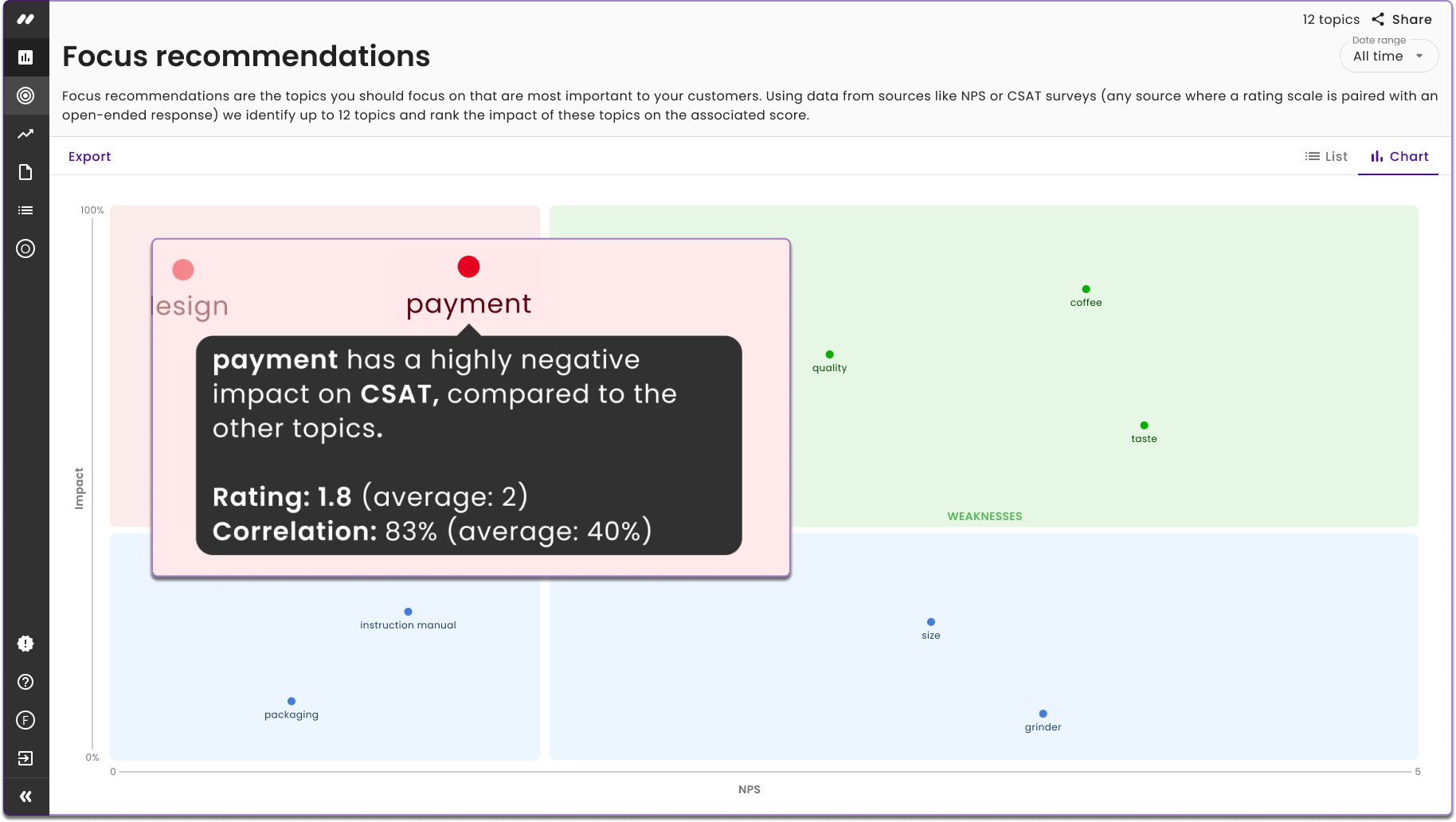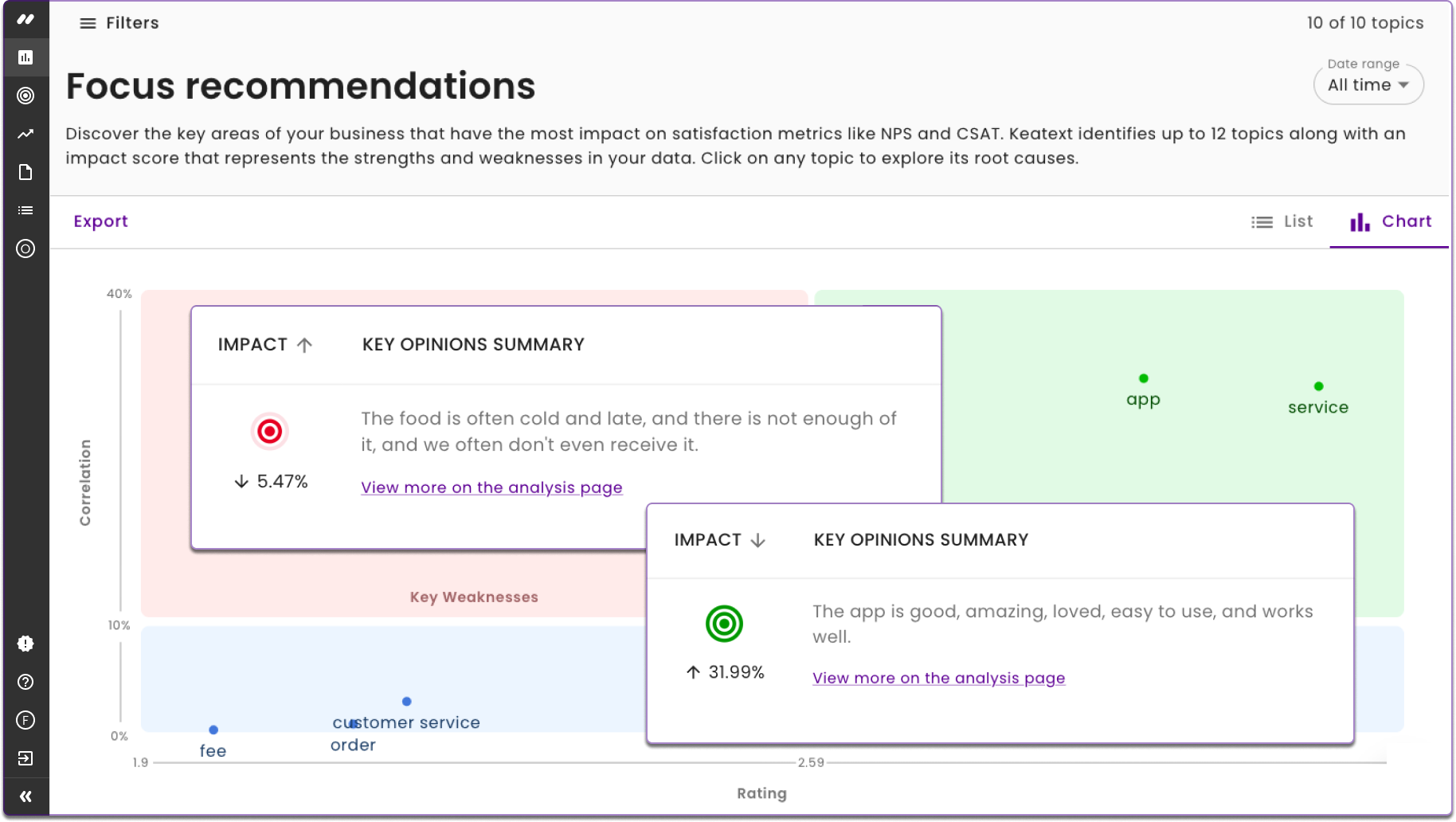Contact centers are an important part of the customer journey and understanding how customers feel when interacting with agents contributes a great deal to managing customer experience.
Just like any stage of the customer journey, when a customer interacts with your contact center, blind spots can happen. When there is a difference between an agent’s judgment of their interaction with a customer and the NPS score given by the customer in a post-call survey, it’s valuable to understand why – and what to do about it.
Are your agents misinterpreting key customer interactions? What is the extent of the discrepancy between agent scores and NPS scores? How do you correct the situation?
As customers and agents can have very different experiences on a call to your contact center, you won’t know why until you fully analyze all the data.
For instance, if a customer’s call ends with a strong resolution they may score as a promoter, but you won’t know the deeper reasoning behind their satisfaction. The contrary can also be true where, despite your agents’ best efforts, nothing can prevent a dissatisfied customer from scoring as a detractor.
Context matters, and without analyzing correlations between all the data – NPS scores and open-ended responses left by customers, agent scores and call transcripts – you are missing out on key insights.
In this blog, we explain how connecting insights from post-call surveys and call transcripts can help illuminate blind spots at your contact center. We will answer:
- How can you leverage the goldmine of data collected at your contact center?
- How does text analysis help you understand agent and customer NPS scores?
How can you leverage the goldmine of data collected at your contact center?
Call transcripts are best understood using text analytics methods that are capable of pulling out the key insights – sentiments, intents, topics, opinions, and context – from large volumes of unstructured text data.
In addition to the call transcript, agents generally provide some details about the call after it ends. This includes a score that ranks the customer’s satisfaction regarding the agent and their ability to resolve the issue they were facing.
Strong text analytics solutions can map both sides of the conversation to analyze the context and provide recommendations to adapt your contact center processes.
The agent score can be analyzed together with the call transcript to find correlations between positive and negative interactions, using methods like sentiment analysis to identify where the customer was dissatisfied, where the agent was frustrated, and more.
Post-call surveys generally use NPS to measure the positivity of a customer’s interaction with your contact center. The NPS score is a good benchmark to gauge the overall performance of your contact center and agents, but it does not tell you the full story of exactly why a customer is a promoter or detractor.
To better contextualize NPS scores, you can analyze the open-ended responses left by customers that elaborate on the score they gave. Bringing together quantitative and qualitative data helps you find correlations between the data that make it more actionable.
With both the agent score and the NPS score at your disposal, you can compare these metrics to better understand the experiences at your contact center. But what do you do when these scores are not the same?
How does text analysis help you understand agent and customer NPS scores?
If agent and customer scores are not the same at your contact center, you might be wondering: Are your agents misinterpreting key customer interactions? What is the extent of this discrepancy between agent scores and NPS scores? And of course, how do you correct the situation?
Strong text analytics solutions can help you understand and explain the discrepancy between agent and customer NPS scores. They can map both sides of the conversation to analyze the context and provide recommendations to adapt your contact center processes.
As customers and agents can have very different experiences on a call to your contact center, you won’t know why until you fully analyze all the data.
Text analytics excels at pulling out key topics, opinions, intent, sentiment, and context from text data like customer feedback or call transcripts. This is often done according to frequency – the assumption being that the greater a topic appears, the more likely it is to matter to your business in a positive or negative way.
However, frequency does not necessarily indicate the impact of a topic. This is where the strongest solutions connect quantitative and qualitative data – like NPS scores and the open-ended responses related to them – and provide actionable, impactful recommendations for what you need to do to improve that score.

With the advent of GPT, innovative solutions are even integrating with this new technology. These platforms use the insights they generate as a knowledge base that helps GPT to understand the specifics of your business. As a result, they can produce more accurate insights like personalized summaries you can distribute across your organization to start making changes.

Armed with these insights, you can provide more guidance to agents to help them leave more accurate scores after a call. Through sentiment analysis, you can pinpoint areas of the transcript where agents were providing good information but leaving the customer feeling dissatisfied for one reason or another.
By training agents to provide better support, your contact center will not only become more profitable, but customers will leave more satisfied and more likely to return to or even promote your business.
Make your most impactful improvements at your contact center
Information collected at your contact center is a goldmine because it captures insights about the whole customer journey. Analyzing and connecting these different sources of data can shed some light on the blind spots in this part of the customer journey.
With these key insights from your contact center, you will better understand which aspects of the business correlate with low NPS scores for each agent. You can leverage that to inform your agent training, better equipping your agents to provide the right answers to customers.
The ROI of making data-driven changes at your contact center from text analysis cannot be understated. Text analytics solutions enable you to analyze all the data at your contact center, generating insights and recommendations from one of your most valuable sets of customer interactions.


